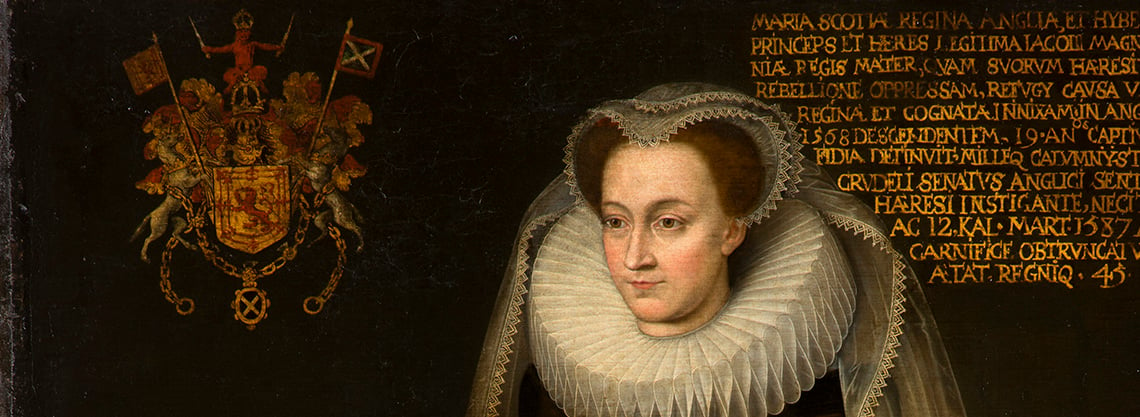
Mary, Queen of Scots (1542-1587)
Mary, Queen of Scots in the Collection
Pendant with a serpent coiled around a tree and two skull cameos
late 16th cent. with later additionsRCIN 51008
The rather elongated rectangular emerald appears to have been cut down in order to fit the area it was intended to cover. The method by which the setting is attached suggests it is a later addition. It is possible that when this part of the pendant was adapted, the small white enamel panels with inscriptions were taken from another piece and made to fit the space which would explain why they appear to be incomplete. The pearls flanking the emerald are attached with gold wire similar to the suspension loop and were added when the pendant was changed. The studded and suspended pearls along the rim are randomly attached and not original.
The French inscription ‘vie et mort’ and the skull cameos are a memento mori. The serpent in the Tree of Knowledge symbolises Sin and the pendant may symbolise the vanquishing of sin.
When this pendant was presented to Queen Elizabeth II in 1977 it was reputed to have belonged to Mary, Queen of Scots. Some elements, for example the skull cameos and the rubies in box settings, appear to be of that period. The opal cabochons with claw settings are also found on Elizabethan and Stuart jewellery.
Although there is no contemporary documentary evidence to support the connection with Mary, Queen of Scots, the 3rd Lord Cardross was the great-great-grandson of John Erskine, 18th Earl of Mar, Regent of Scotland 1571-2 and Guardian of James VI and I. The association was perhaps made during the nineteenth century when relics of the queen were much sought after. It was probably at that time that the pendant was altered.







